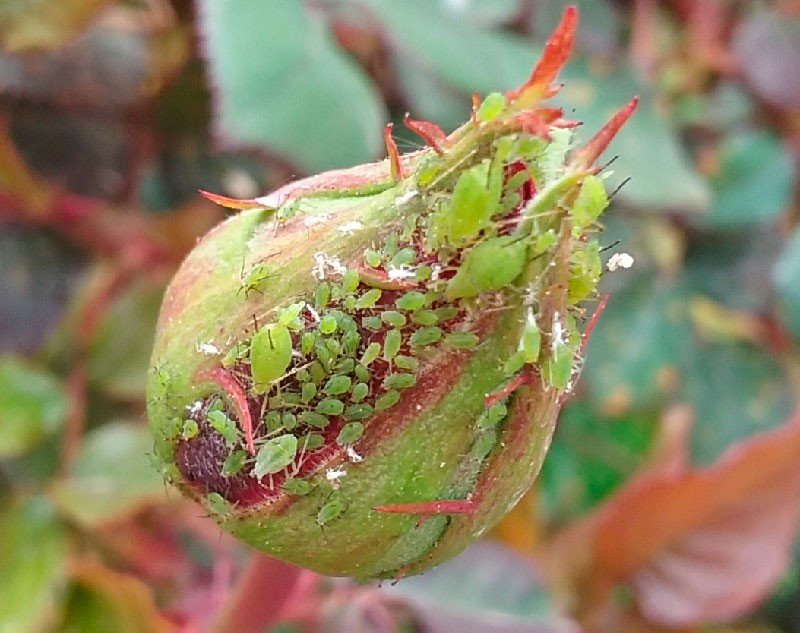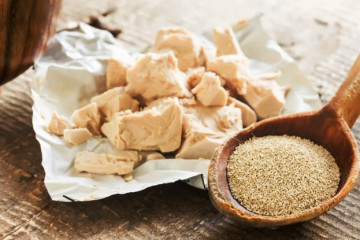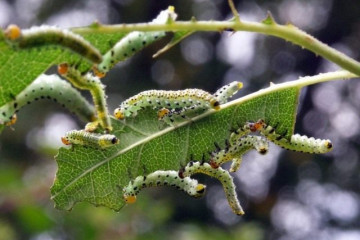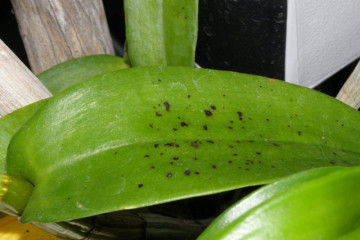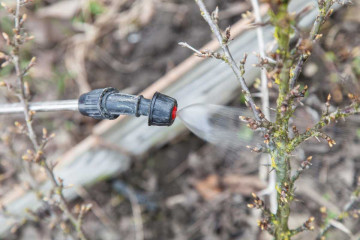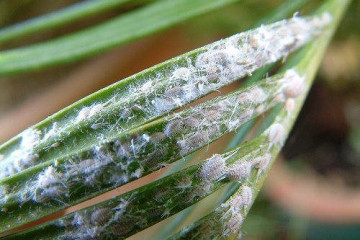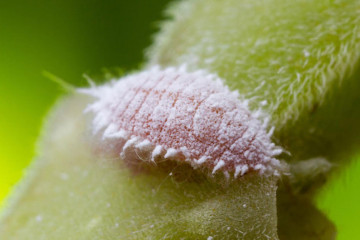How to treat roses from diseases and pests
Content:
In the wild, plants take care of their own health. To do this, they emit volatile substances that scare away pests, or clog excess water in the affected cells, provoking their death together with the pathogen. Cultural roses are devoid of such a mechanism, so gardeners decide how to process roses so that the flower garden will delight with colors and aroma.
Groups of preparations for treating roses from pests and diseases
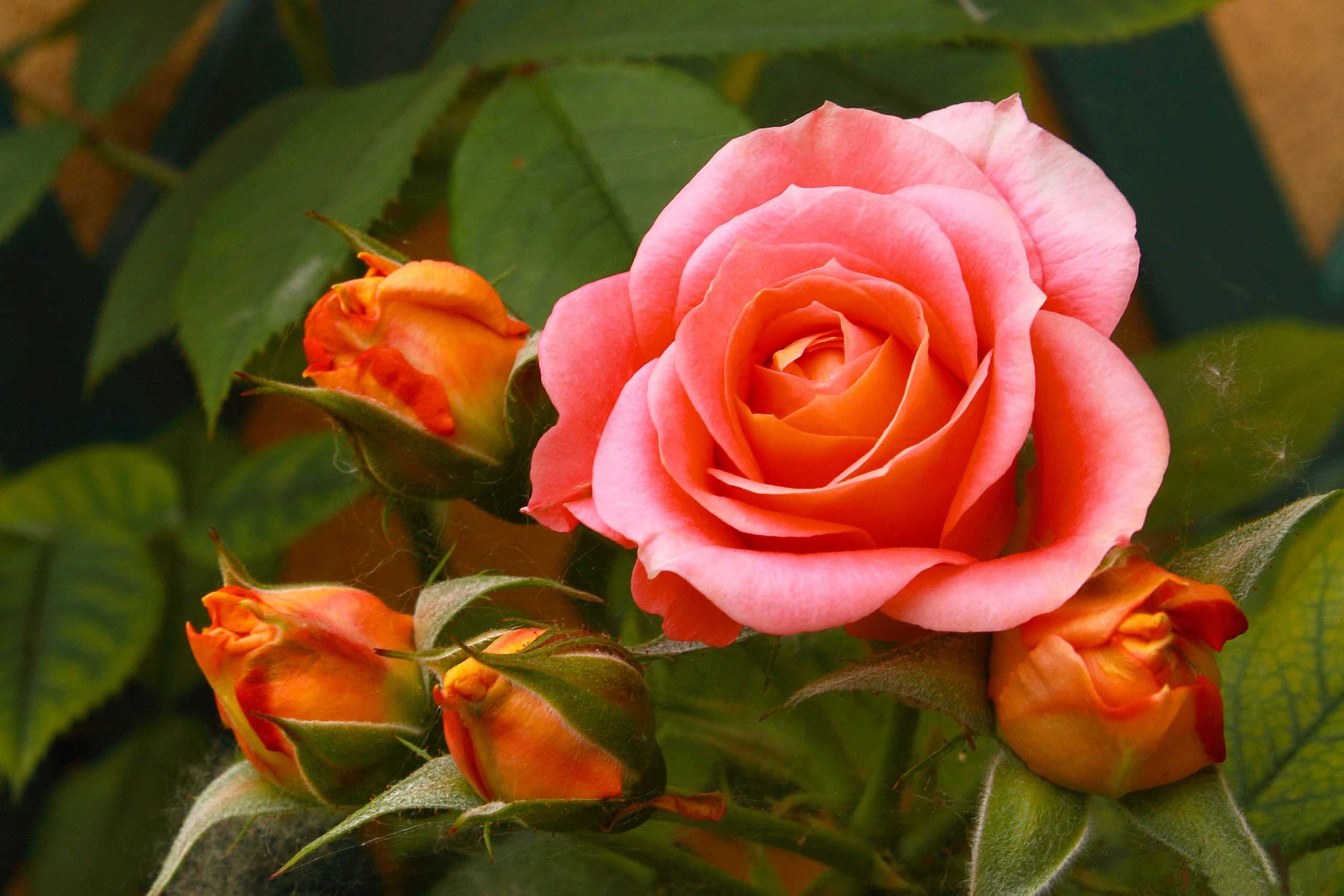
Healthy flowers
Wildlife reactions cause a variety of remedies in the gardener's arsenal. They are divided into groups.
Protection
These are elicitors, in which natural and synthetic substances are used:
- Chitosan based on chitin extracted from the shells of crabs and insects. Products with chitin completely destroy fungi and nematodes.
- Organic acids.
- Bacterial cultures.
Elicitors restore plants, increase resistance to diseases. The drugs are also used for prophylactic treatments.
Treatment
The group of remedies is divided into three types:
- Chemical. They exterminate insects and get rid of diseases. These substances disrupt the beneficial microflora of the plant. During flowering, "chemistry" is unacceptable.
- Household. This is, for example, furacilin (1 g per 1 liter of water). The rose bush is sprayed directly in May, trying not to spill it onto the soil. Another remedy is LOC. Use an aqueous solution: 2 tbsp. l. 8 liters.
- Biological. The compositions act against pests and diseases.
How to process roses from pathogenic flora in the garden is chosen by a florist.
Stimulation

Stimulant drugs
This group regulates all processes in the plant.
Stimulating drugs with phytohormones can accelerate plant growth, or, if necessary, slow down their development (drugs with inhibitors).
Prophylaxis
Preventive measures are easier than treating a sick rose garden. Some diseases (black spot) cannot be cured - the affected bushes are destroyed. But a terrible phenomenon can be prevented by special spring treatment.
The culture is treated with a group of prophylactic drugs in the future, the entire season until winter dormancy.
Strong, healthy shrubs with a thick glossy leaf are less susceptible to pest attacks and diseases. Therefore, experienced gardeners take care of top dressing, correct pruning, and watering regime.
How to properly handle roses
Roses are a capricious plant to care for. Without supervision, there is no lush flowering, planting does not bring that aesthetic pleasure, because of which a wonderful decorative culture is bred.
When growers are preparing for processing, three points are taken into account:
- Personal safety equipment. Take care of protective equipment: respirator, waterproof cape, rubber shoes, goggles and a hat. If the equipment did not help and the substance got on the skin, proceed according to the recommendations on the packages. The manufacturer is worried about them, gives clear instructions: rinse with plenty of water. The equipment is chosen to spray "fog" rather than a jet.
- The weather.The treatment of roses from diseases and pests is carried out during a period that is optimal for plants, but not for a grower. Better to work on a cloudy day, spray on a dry leaf. If it is hot, they are treated early in the morning, or after sunset. The wind will carry small drops of solution, so they wait for calm weather, or spray from the leeward side.
- Solutions. The correct dosage is half the battle. The second component is the freshness of the solution. Watered on the leaf and shoots with a freshly prepared composition, otherwise you can harm the culture. The reprocessing is done with a different chemical with different components. In order not to get burns, mineral oil preparations are not combined with fungicides.
How to process a rose for prevention
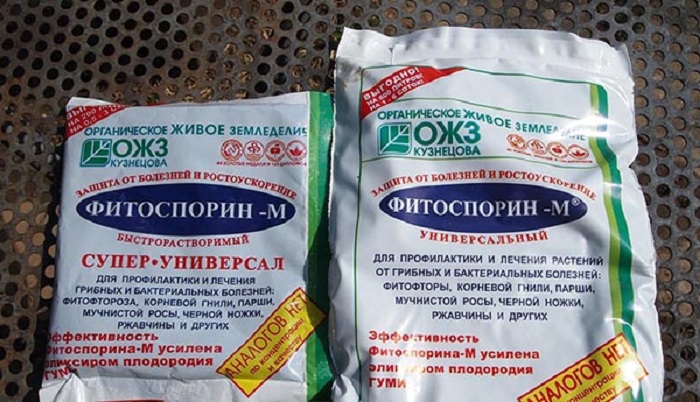
Preventive remedies
The most common rose problems are fungi and related illnesses. Spores are carried by wind, slugs and insects. In favorable conditions (warm and damp), they germinate. Myceliums bring suffering to ornamental, vegetable crops, fruit and berry bushes.
To save roses for preventive purposes, fungicides are used. They are also suitable if the disease has captured an area with all the plants.
Fungicides are divided into two fundamentally different groups.
Chemical
They are of inorganic origin with active ingredients: sulfur, copper, iron, mercury. These are drugs: Champion, Cuprosat, iron vitriol, Tiovit Jet.
Substances of organic nature in chemical compositions are more gentle for plants. They do not contain metals and are biodegradable. These are: Mirage, Topaz, Strobi, Bogatyr, Ordan, Cabrio, Alpha Treater.
Fungi quickly get used to drugs, so fungicides need to be changed.
Biological
A new type of drug that acts on plants like the grafts that people get. That is, plants gain immunity against many diseases.
Biological fungicides are powerless against an already existing, well-developed pathogenic flora.
More effective than spraying roses with biofungicides, there are no preventive measures. These are: Trichodermin, Bioreid, Fitosporin.
The most common pests of roses
The rose garden attracts many insects, caterpillars, slugs, butterflies, whose populations can be destroyed by front gardens and flower beds.
The most common:
- Spider mite. Breeds rapidly in dry hot weather. When daytime temperatures are + 29-31 ° C, colonies can capture an area with rose plantings in 2 weeks. Ticks live in a web on the underside of leaves, suck out cell sap, and cause lightening, yellowing and death of the leaf plate.
- Leaf cutter bee. At the end of June-July, on the green part of the roses, you can find round holes of the correct shape. This is how the leaf cutter bee works. The decorativeness of the rose garden falls greatly, the spoiled leaves dry out.
- Golden bronze. Better known as the "May beetle", it flies from May to August, spoiling the flowers of roses. Prefers white and yellow colors.
- Sawfly rosy. Scrape off the top of the foliage, making it transparent.
- Sawfly rosy descending. Loves young shoots, eats them from the inside. Outwardly, it is impossible to notice the pest. The affected rose weakens, dies.
- Aphid. Small green insects live in large colonies. Feeding on sap, aphids deform buds and leaves.
- Thrips. You can notice the pest by small red specks. The flowers become unkempt, quickly fade, the leaves are covered with a silvery bloom.
- Scoops. Caterpillars live in the ground, feed at night. It is difficult to notice them, only traces of activity are visible - gnawed stems and leaves.
- Rose cicada.The white or pale yellow larva eats up the pulp of the leaf, lays eggs in the stems. The leaf, devoid of cell sap, acquires a marbled color.
Gardeners, borers, scale insects - there are many pests of the rose garden. All season you need to observe the plants, drive out "guests" with fungicides.
General arrangement of pests

Caterpillars
Roses attack a large number of insects. On the leaves are individuals with a piercing-sucking mouth apparatus: aphids, ticks. Gnawers can be both outside the stems and inside: caterpillars, larvae, nematodes, sawflies.
Foamy slobber lives in the axils of the leaves. Rose buds are only interested in rose buds. The bronze and deer find their food inside the buds - they are not interested in other parts of the plant.
How to treat roses from diseases
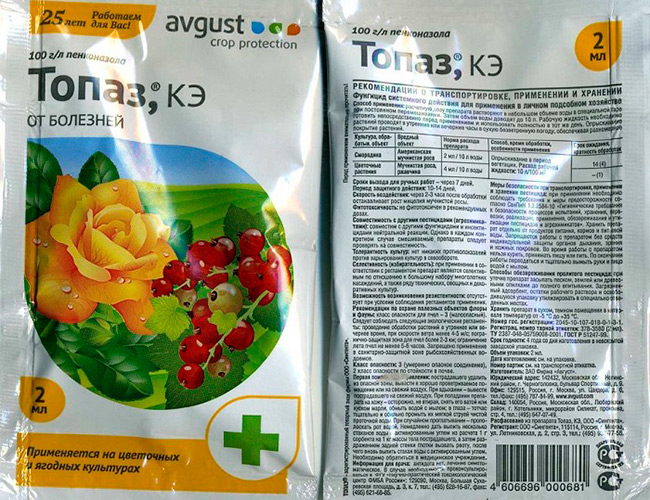
Remedies for diseases
All is fair in the fight for the health of roses. The industry produces a huge variety of pesticides. But gardeners also know many folk ways.
Popular drugs
The funds are chosen based on the region of application, type of soil, proximity to other plants:
- Ridomil Gold. The two-component drug penetrates deep into the plant, fights against cercosporosis, anthrocosis. Effective against downy mildew, black spot. Toxic to humans and pets. Add 25 g to a bucket of water, spray on the sheet.
- Fundazol. White toxic powder stops the reproduction of fungi, destroys aphids, spider mites, larvae of various insects. In 300 g of water, 5 g of the substance are diluted - an overdose is dangerous.
- Profit Gold. In addition to the active fungicides famoxadon and cymoxanil, the composition contains trace elements zinc and manganese. Dose - 4 g per bucket of water. Fights powdery mildew and late blight.
- Topaz. The emulsion concentrate is diluted with 2 g in 10 liters of water, used against powdery mildew. 3 treatments are needed per season.
- Baktofit. Biofungicide in the form of a powder or suspension is used in the fight against fungal diseases in damp climates. The solution is 10-30 g per bucket of liquid.
- Tiovit-Jet. A preparation based on concentrated sulfur. Insects and powdery mildew are afraid of spraying 40 g of granules dissolved in 10 liters of water.
- Fitosporin. Bacteria and pathogenic fungi die from the use of 5 g of powder diluted in 5 liters of liquid. The pesticide can be used at any stage of the growing season.
Before choosing a fungicide, gardeners get acquainted with its pros and cons, environmental class.
Folk remedies

Folk ways to combat diseases and pests
Chemical plant protection products can destroy not only pests, but also beneficial flora, and worsen the condition of the soil. They are harmful to humans and pets. Therefore, many growers abandon the "chemistry" in favor of proven home recipes. Further, it is described how to spray roses from diseases and pests - folk remedies.
For powdery mildew, which looks like a white bloom on the green part of roses, apply:
- Mullein (1 kg) is mixed with ash (200 g), bred in a bucket of water. Insist for a week, filter. The shrubs are poured over until the buds open without dilution with water. If the leaves have already blossomed, dilute 1:10 with water, spray.
- Tea soda (1 tbsp. L.) And laundry soap (0.5 tsp.) Are diluted in 4 liters of water, roses are treated. Repeat 2-3 more times every week.
- Potassium permanganate (3 g) is diluted in a bucket of water, watered at the root, sprinkled on the leaves.
- The serum is diluted with water 1:10, processed 3 times after 3 days.
- Garlic. Grind 300 g of root vegetables, stir in 10 liters of water, after a day the strained infusion is sprayed on roses.
Anti rust:
- Euphorbia vine (1.5 kg) is crushed, poured with a bucket of water, insisted for a day.
- Copper sulfate (30 g) is poured with a liter of hot water. Laundry soap (300 g) is grated, dissolved in 9 liters of water. Vitriol is poured into a soapy solution in a trickle, mixed. Plants are treated with the cooled composition.
For black spot:
- The mullein is bred in water in a ratio of 1:20, and diseased roses are sprayed on the leaf.
- Iodine (5 ml), plus 2 liters of water.
If traditional methods do not work, fungicides are used.
Calendar for processing roses from pests and diseases
The care of the rose garden comes with the onset of spring. Immediately after pruning and cleaning the flower garden, they begin to prevent and treat the culture.
Spring
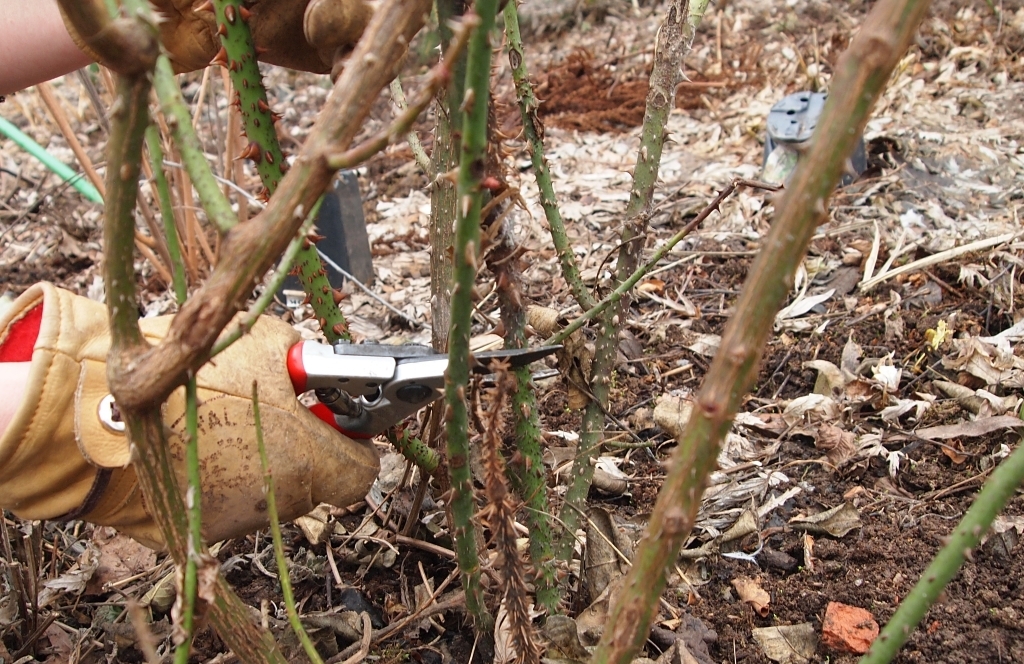
Spring care
The first spraying usually occurs in March, April. Apply a solution of copper (3%) and iron (1%) vitriol. Vitriol can be replaced with a 0.4% solution of copper oxychloride, or Sistan.
Second processing. Ash (3 glasses) is boiled for half an hour in 3 liters of water, the plants are pollinated with a cold strained composition. Pests are scared away by infusion of hot pepper and tobacco.
Third procedure. Fitoverm, Abiga-Peak are used. At the end of spring, Oxyhom is used.
Summer
In the heat, insects become active. When a spider mite, bugs and leaf rollers, caterpillars and slugs appear, insecticides are sprayed: Kuprozan, Funginex, Polycarbocin. How to properly process roses is written in the instructions on the package.
Fall
First processing. After flowering, a composition is prepared: 1.5 kg of ash is boiled in half a bucket of water. Add a tablespoon of turpentine and salt, 1 glass of liquid soap. The volume is brought up to 15 liters with water.
The second treatment with Fitosporin as a guarantee of health for the next season. Before wintering, it is useful to pour the rose bushes with a 1% solution of Bordeaux liquid.
Errors in the seasonal processing of roses
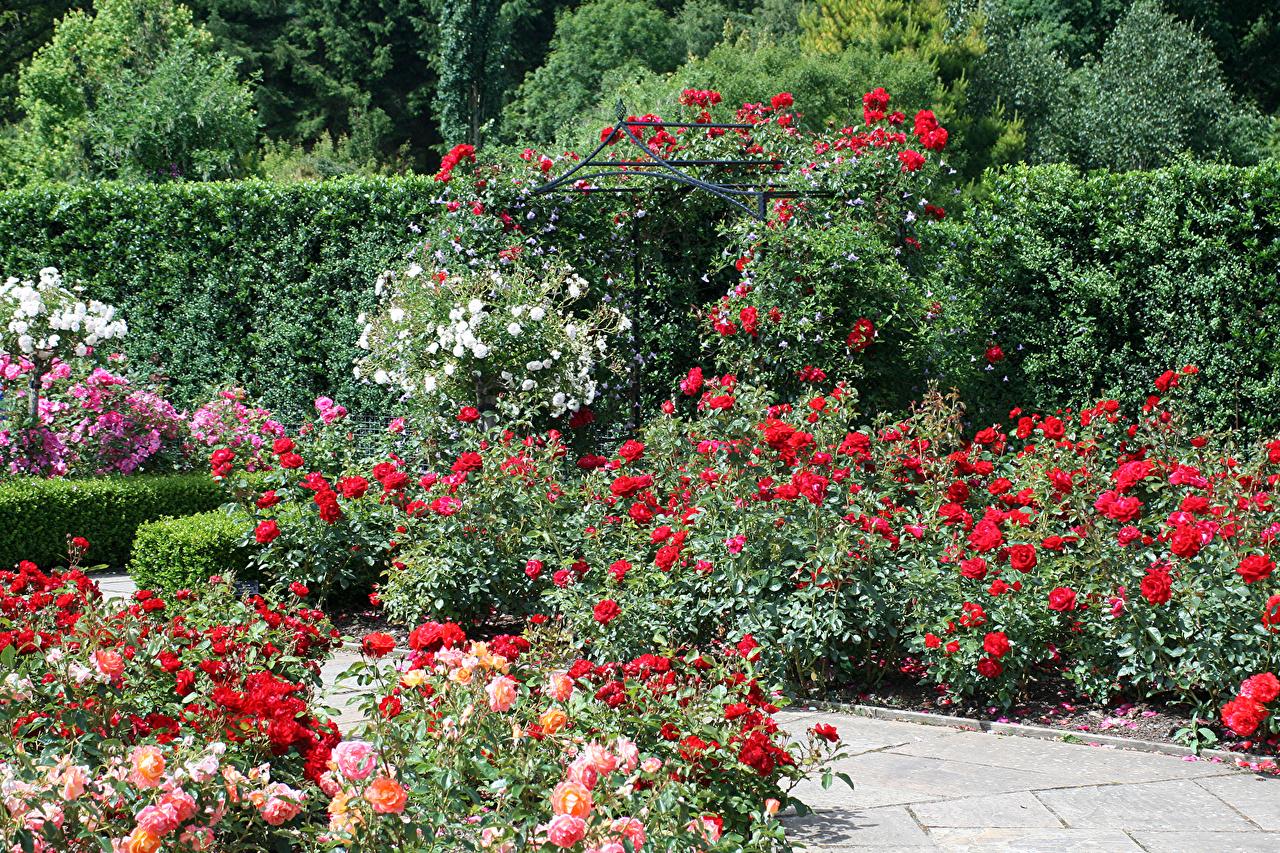
Blooming rose garden
Some mistakes in the processing of rose bushes negate the efforts of flower growers. So, spraying after wintering is carried out 2-3 days after radical sanitary pruning, otherwise fresh "wounds" will become the entrance gate for infections.
The first thing that roses should receive after winter are copper-containing preparations and fungicides. It is advisable to feed them immediately after early disclosure. A very small spray is used, especially when sprinkled on foliage - a jet can deform and break young shoots and buds.
Florists should know how to handle roses in dry and windy weather. Do not spray drugs at midday, this leads to tissue burns.
A big mistake of gardeners is to increase the dose of the drug. The manufacturer indicates the exact ratio of the active substance to the liquid.
In a dusty and gassed world, cultivated roses will not survive without the help of the owners of flower beds. They are attacked by viral diseases carried by pests. The industry produces drugs, the action of which is aimed at preventing diseases, treating, and destroying pathogenic flora. A separate group of funds stimulates the growth of plantings, increases resistance to diseases.
